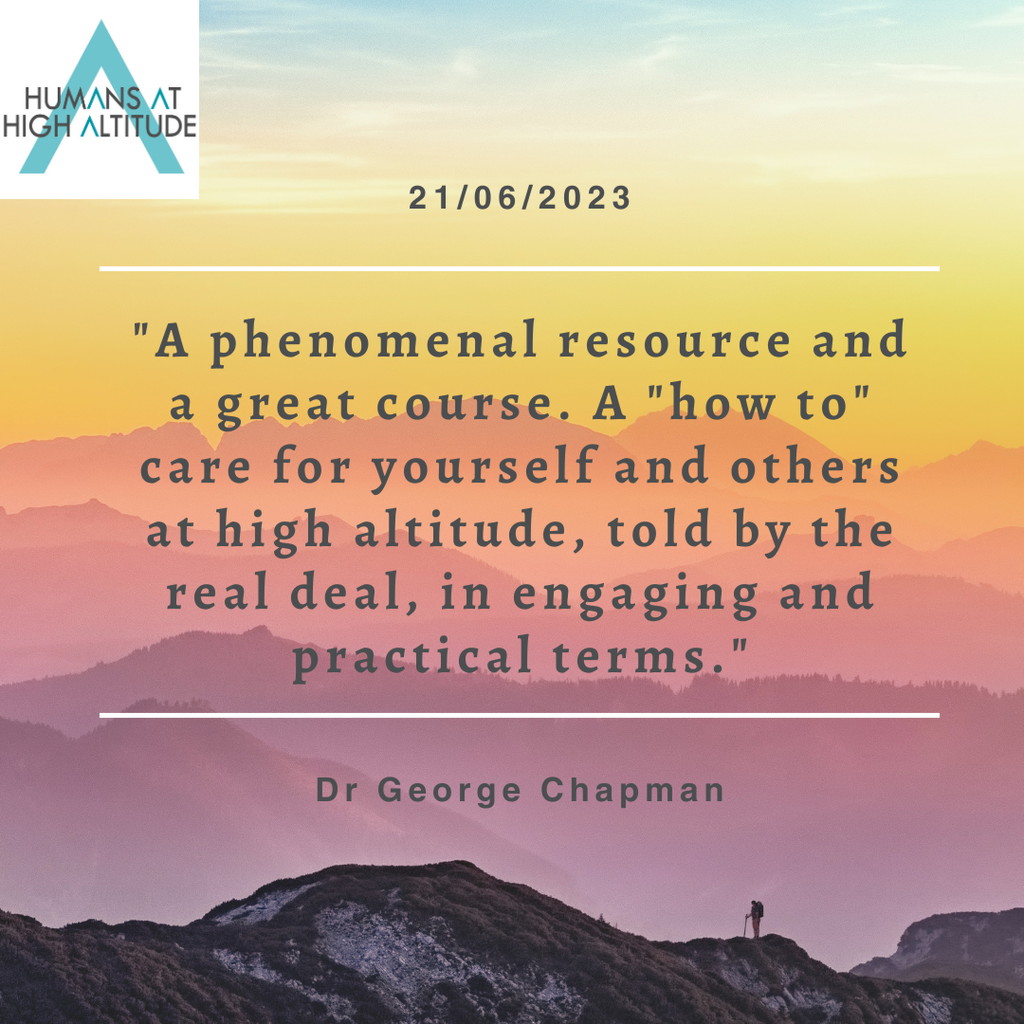Dr Hannah Lock / Emergency Medicine Senior Clinical Fellow & Portfolio Doctor / Ysbyty Gwynedd, Wales
Dr Hannah Lock is a Senior Clinical Fellow in Emergency Medicine at Ysbyty Gwynedd, Bangor. Since 2018 she has also worked as an Expedition Doctor, specialising in high-altitude environments, and has been involved in medical research on three high-altitude research expeditions. Hannah is part of the teaching faculty for UCLan’s Diploma in Mountain Medicine and World Extreme Medicine. In 2023 she launched an online learning platform called Humans At High Altitude, sharing knowledge about high-altitude medicine with both medics and lay adventurers.
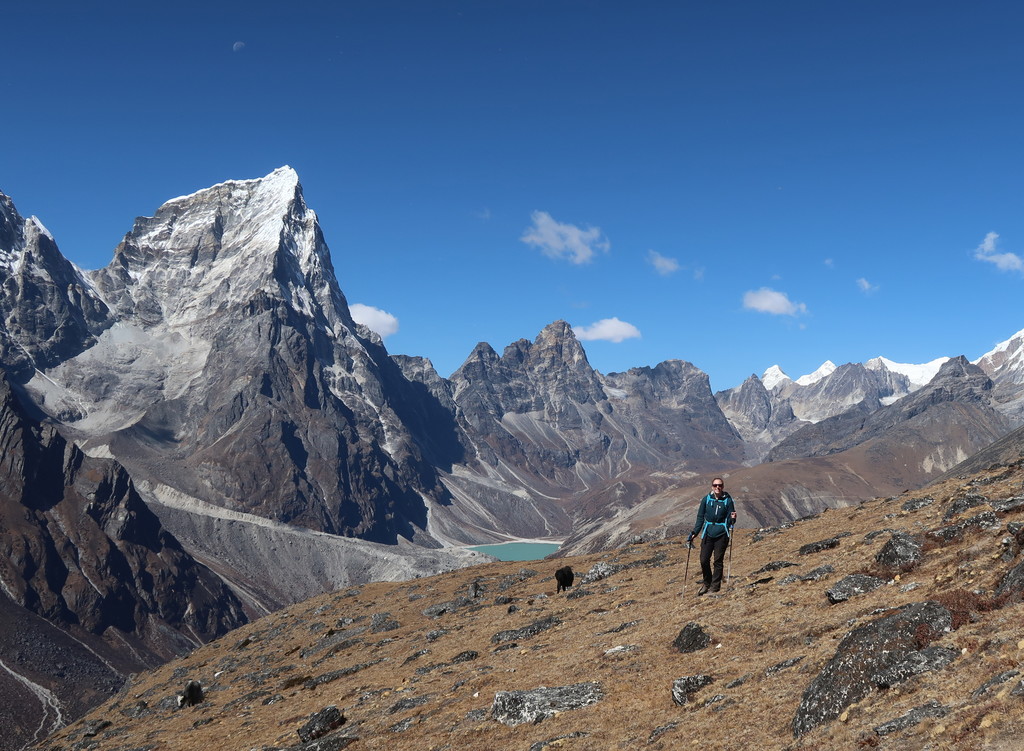
Introduction
Whether you’re planning a personal high-altitude adventure or taking a job as a medic on a high-altitude expedition, a thorough understanding of how this environment affects us is key to preventing, assessing, and managing medical issues. This article aims to summarise the basics of high-altitude medicine to get you started.
In 2018 I was trekking in the Khumbu region of Nepal with a friend and one porter. We had been walking for seven days to reach the little village of Chukhung (4730 m) and I was tucking into my evening meal in the cosy tea house when our porter, Bishal, came over looking concerned. He had been chatting to the owner of the tea house who was worried about one of the other guests and knowing I was a doctor, Bishal came to ask if I would help.
The normally fit and well 21-year-old man was lying on his bed, looking pale and unwell. He told me he had vomited, had a severe headache, and felt very tired. He and his two friends had walked from Lukla (2800 m) to Chukhung (4739 m) in three days and none of them felt great but he was the worst. They had no prior experience at high altitudes and minimal knowledge of altitude illness. They planned to trek over the Kongma La, a pass at 5555 m, and walk down to Lobuche (4910 m) the following day.
After a more detailed history and brief examination, I concluded that the man was suffering from moderate-severe Acute Mountain Sickness and explained to him what this meant. I gave him some of my own Acetazolamide, Ondansetron, and Paracetamol. I made him a litre of fluid with electrolyte mix and told him to drink this over the next couple of hours.… Read on to find out what happened to him at the end of the article…
Basic Altitude Physics
| 1500 – 2500 m | Intermediate Altitude |
| 2500 – 3500 m | High Altitude |
| 3500 – 5500 m | Very High Altitude |
| 5500 – 8000 m | Extreme Altitude |
| >8000 m | Ultra Altitude ‘Death Zone’ |
Figure 1: Widely accepted definitions of altitude zones
Simply put, as altitude increases, the barometric pressure decreases. At lower pressures, gas molecules are more spread out in any given space. This results in there being fewer gas molecules in each breath we take in at high altitudes, which includes lower amounts of our favourite gas, oxygen. Oxygen still makes up 21% of the total molecules in that breath of air, but compared to at sea level the actual quantity gets lower as we ascend. Make sense?
To give us some relatable numbers, compared to at sea level there is effectively only two-thirds as much oxygen available by the time you reach 3000 m, only half by the time you reach 5500 m, and only one-third at the summit of Everest! So how do humans cope with this huge reduction in available oxygen? The answer lies in adequate acclimatisation.
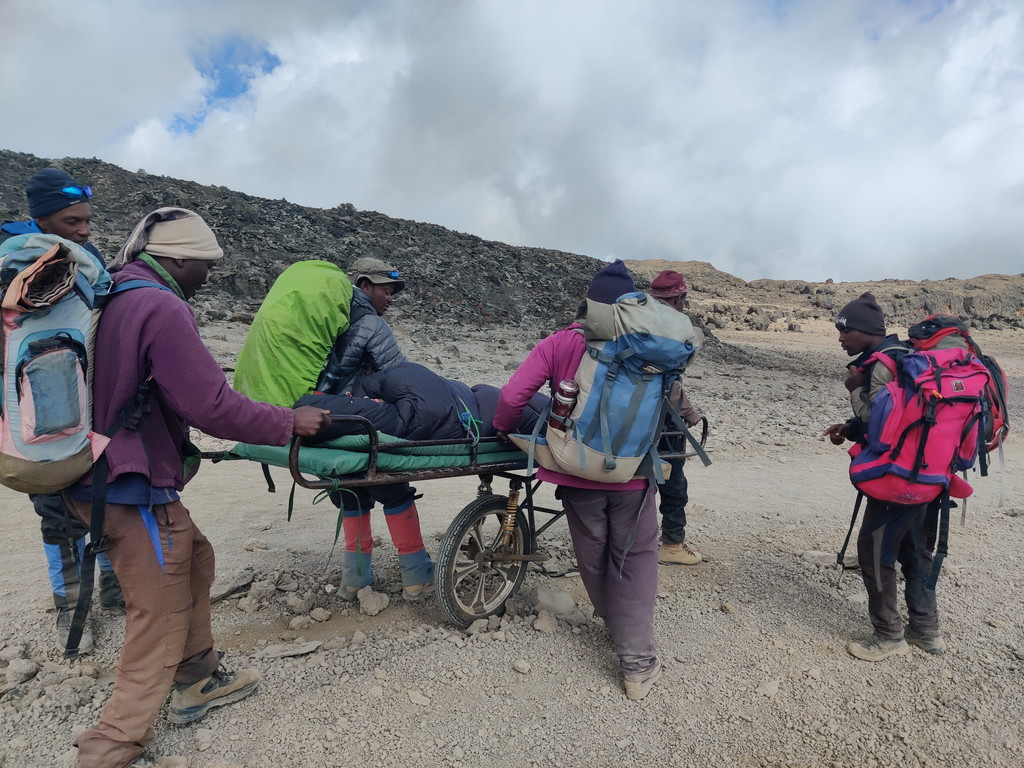
Acclimatisation To High Altitude
Some Indigenous populations have lived at over 2500 m for thousands of years and have evolved genetic adaptations to cope with high altitudes. Lowland populations do not have these adaptations and are not automatically physically prepared for high-altitude living.
Acclimatisation to high altitude describes the physiological processes of adaptation to low oxygen levels. The body is forced to adapt and work hard to cope with worsening hypoxia. Acclimatisation is a gradual process that takes days to weeks and the rate of acclimatisation differs between individuals. A well-acclimatised person can tolerate altitudes that would kill a person that has just arrived. Poorly acclimatised people are most at risk of altitude illness.
Within hours of being at high altitude, our hypoxic ventilatory response reacts to the decreased partial pressure of oxygen in the arterial blood, and the result is an increased respiratory rate and depth of breathing. Our heart rate and stroke volume also increases. More fluid is excreted from the renal system to increase the concentration of haemoglobin in the blood.
In the following days, oxygen is released more readily from red blood cells to be utilised in the tissues, we increase blood flow to vital organs such as the brain, and we start to produce more erythropoietin to stimulate the production of more red blood cells to increase our oxygen carrying capacity.
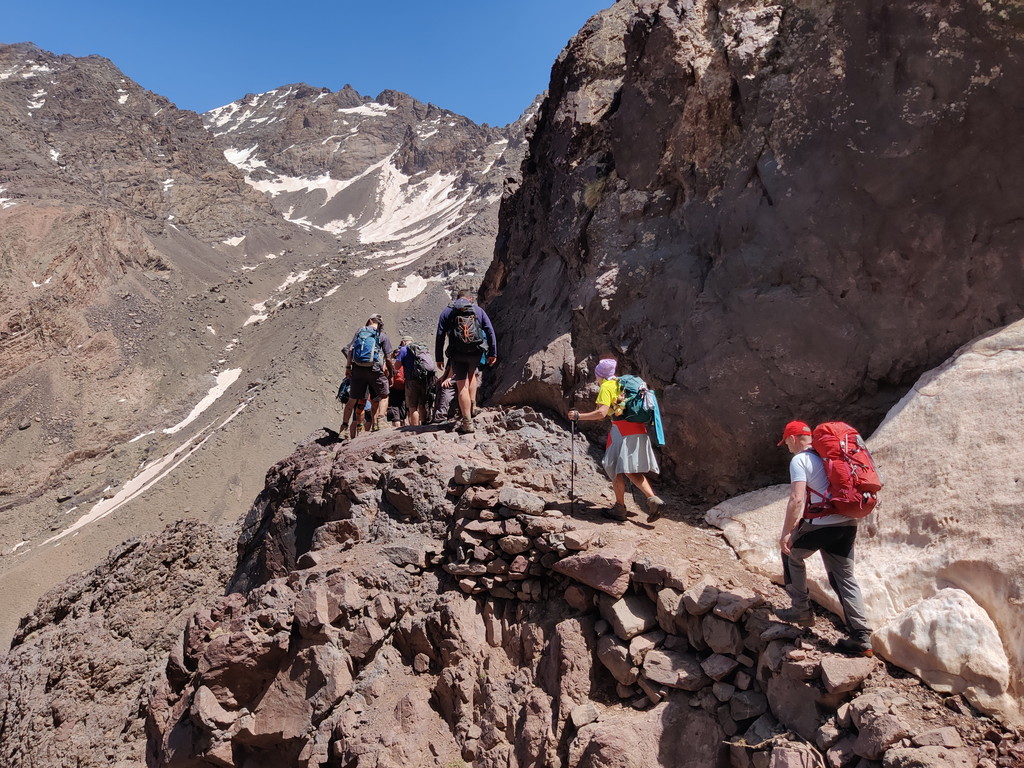
Altitude Illness Overview
Acute Mountain Sickness (AMS)
AMS is a collection of symptoms generally starting 6-12 hours after arriving at an altitude greater than 2000 m. The diagnosis of AMS is a Headache + 1 more of the following symptoms:
- Nausea and/or vomiting
- Reduced appetite
- Fatigue
- Dizziness
The headache tends to be throbbing in nature, worse on exertion and at night. AMS is common when ascending > 2500 m rapidly and gets more common at higher altitudes.
Risk factors for AMS include rapid ascent, altitude > 4500 m, previous altitude illness, physical exertion at high altitude, pre-existing lung condition, young age, and limited knowledge of the condition.
The treatment for AMS tends to be relatively simple – stop ascending, rest, simple analgesia, antiemetic if required, and rehydration. Descent should always be considered, especially in severe cases. If the casualty shows no improvement overnight then descent should be arranged. Additional management strategies for moderate to severe cases include Acetazolamide (Diamox) 250 mg BD PO, Dexamethasone 4 mg QDS PO, supplemental oxygen, and portable hyperbaric chamber use. None of these replace the need for descent in severe cases. Descent is the gold standard treatment for all severe altitude illnesses.
High Altitude Cerebral Oedema (HACE)
HACE is a rare but life-threatening high-altitude illness that must be recognised and acted on urgently. HACE is most commonly seen at altitudes over 5000 m, however, there have been rare cases seen at altitudes as low as around 2500 m. As with AMS, the pathophysiology is not completely understood but HACE is thought to be a continuation of AMS with both vasogenic and cytotoxic mechanisms hypothesised.
HACE is diagnosed by the presence of current or recent symptoms of AMS plus any new neurological signs. Often the sufferer may not be aware of their condition and it may be team members who first notice the signs. The most commonly recognised neurological signs are:
- Ataxia
- Confusion or disorientation
- Speech disturbance
- Behaviour changes e.g. withdrawn, violent, euphoric
- Urinary incontinence or retention
- Seizures (late sign)
- Reduced consciousness
Unless there is an obvious, reversible alternative diagnosis (e.g. hypoglycemia in a known diabetic and the casualty improves fully with glucose administration), any of these signs at an altitude greater than 2000 m should be managed urgently as HACE.
Risk factors are very similar to those of AMS, with a rapid ascent to high altitude being the most important.
Managing HACE always involves organising urgent descent to an altitude of at least 500 m lower than the point at which symptoms or signs of HACE occurred. Preferably the casualty should be carried rather than walked down, or a helicopter called if available in the region. In addition, Dexamethasone 8 mg PO initially (followed by 4 mg QDS) should be started and supplemental oxygen administered if available. They should not be left alone and good supportive care is essential. If descent cannot happen immediately e.g. too dangerous to move the to group due to weather conditions, a portable hyperbaric chamber can be used if available.
A portable hyperbaric chamber (see picture below) is a sealed bag in which a conscious casualty can be placed for several hours at a time. By pumping air into the bag, the pressure inside increases, and this simulates a lower altitude than the true elevation of the environment, hence increasing the available oxygen inside the bag. Most bags or chambers can simulate altitudes significantly lower than the true altitude, enough to improve someone’s symptoms significantly in many cases. This is only a holding method, however, because as soon as the person leaves the bag, their hypoxia and symptoms can return rapidly. Note that this is not appropriate management for unconscious patients.
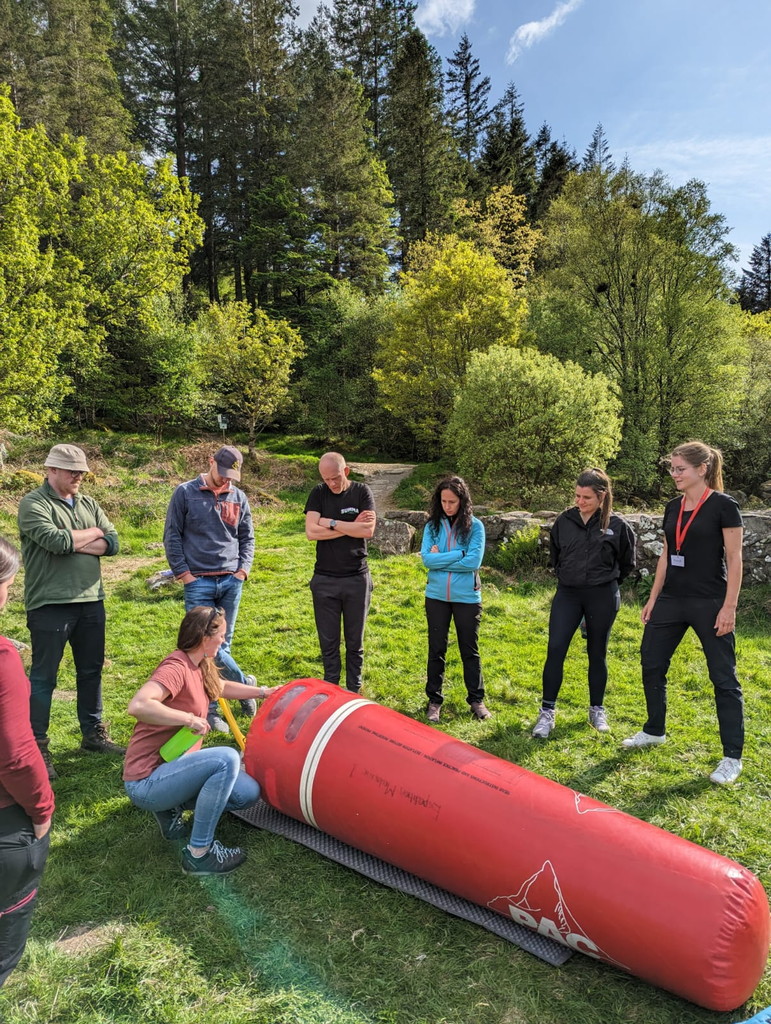
High Altitude Pulmonary Oedema (HAPE)
HAPE is another potentially life-threatening high-altitude illness that must be managed with urgency. It generally occurs a few days after the ascent to >2500 m, with the incidence increasing with altitude. Some data suggests the incidence is about 15% at 5500 m. This is a non-cardiogenic pulmonary oedema thought to be caused by a patchy distribution of vasoconstriction across the lungs in response to hypoxia. The uneven spread of vessels contracting leads to stress failure of the membranes and fluid leaking from the capillaries into the alveoli.
Symptoms may start mildly but can rapidly progress to severe:
- Significant fatigue
- Shortness of breath, which does not recover with rest
- Cough, which is initially dry but can become productive
- Haemoptysis
- Chest pain
- Low oxygen saturations and increased respiratory rate (often useful to compare to those of people feeling well who have had a similar ascent rate)
- Crackles on auscultation, often mid-zones worse
- AMS symptoms commonly occur
Risk factors for HAPE are the same as for AMS plus altitude > 4500 m, recent or current inflammatory or infectious lung condition, male sex, cold, previous HAPE, small lung volumes, conditions predisposing to pulmonary hypertension e.g. structural heart defects, COPD, pulmonary fibrosis.
As with HACE, managing HAPE always involves organising urgent descent. Consider differential diagnoses but when in doubt, treat them as HAPE. The casualty must not be left alone, keep them sat up and avoid any further exertion. Supplemental oxygen should be administered if available and Nifedipine 30 mg given. There is no role for diuretics in the treatment of HAPE as this is not a cardiogenic fluid overload and often the casualty will have intravascular volume depletion. If descent cannot happen immediately (e.g. too dangerous to move the to group due to weather conditions), a portable hyperbaric chamber can be used if available. A chamber can also be used to stabilise a casualty whilst descent is organised but its use must not delay the evacuation.
Preventing Altitude Illness
As with any medical condition, prevention is better than cure. There are several ways in which to prevent high altitude illness but the most important is to allow adequate acclimatisation by gradual ascent.
The consensus from most medics including the Wilderness Medicine Society panel of experts is that above 3000 m, you should not not increase sleeping elevation by more than 500 m per day. This doesn’t mean you can’t ascend more than this during the daytime (e.g. walk up and over a pass gaining 800 m height), but that you must descend again to sleep no higher than about 500 m from the altitude of the previous night (e.g. descend 300 m vertical height down the other side of the pass you just climbed in the above example).
It is also advised to include a rest day every 3 – 4 days to aid acclimatisation. During this rest day, gaining altitude on a day trip is fine, so long as there is no increase in the sleeping altitude. Vigorous exercise is not recommended for a day or two after arriving at a modest altitude.
Managing risk factors is also important e.g. maintaining adequate hydration and ensuring good food and hand hygiene to reduce the risk of any concurrent illness.
Medical Prophylaxis
The only drug that aids acclimatisation to reduce the risk of altitude illness is Acetazolamide (mentioned earlier in the treatment of AMS). Other drugs can reduce the risk of HACE and HAPE but do not work by speeding up acclimatisation. Acetazolamide increases the hypoxic ventilatory response by inducing metabolic acidosis, leading to oxygen availability.
One of the most common questions I get asked is whether someone should take Acetazolamide to aid them on their high-altitude adventure. Of course, this must be answered on a case-by-case basis taking into account medical history, medication list, etc. The WMS approach to answering this question recommends a risk stratification approach. The assessment must include their planned ascent profile and previous history at altitude to conclude their risk level. See Figure 2 for the WMS risk categories for AMS.

Figure 2: Copied from the Wilderness Medicine Society Clinical Practice Guidelines for the Prevention and Treatment of Acute Altitude Illness: 2019 Update.
Summary
Prior knowledge of altitude illness and gradual ascent to high altitude remain the best ways to prevent all altitude illnesses. Acetazolamide aids acclimatisation but is not a magic bullet and does not replace the need for safe ascent profiles. Any new neurological signs at high altitude should be treated as HACE until proven otherwise. HACE and HAPE are life-threatening conditions and someone displaying signs of either (or both) of these requires urgent support and evacuation to lower altitudes. Descend. Descend. Descend!
What Happened To The Man in Chukhung?
I had formulated some evacuation plans in case my unexpected patient had not improved or had deteriorated, but when I went back to see the young man I was relieved to find him looking a bit better. He had managed to keep down the fluids with no further vomiting and his headache had reduced from severe to moderate.
The following morning I checked on him before setting off for my own trek and was pleased to find he was feeling much better but still very tired. I advised him not to trek that day, but to rest, hydrate and acclimatise to the current altitude. I gave him another dose of my own Acetazolamide and advised him that only if he felt well the following morning should he attempt to continue the trek and that if he started to feel worse again to descend. I spent some time with him and his friends explaining some basic altitude physiology and medicine. I didn’t see them again after this so I don’t know what happened later but I do know that this illness could have been prevented with a little bit of knowledge and a slower ascent rate.
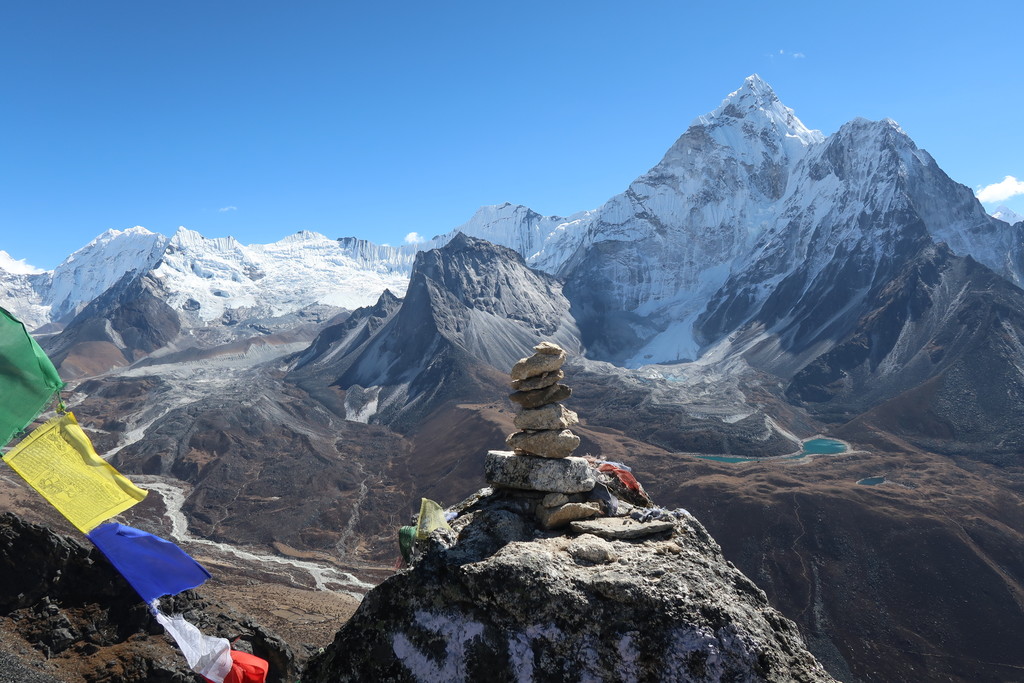
Where To Learn More…
To gain a deeper understanding of altitude medicine and gain confidence and knowledge before working as a medic at high altitude, my online course An Introduction To Humans At High Altitude is ideal. This is the resource I was looking for when I started my expedition medicine journey. It’s a self-directed course/e-learning package with over five hours of pre-recorded videos, practical activities, and case studies broken down into bite-sized chunks. It covers everything from altitude physiology, illnesses (beyond those in this article), route planning, sleep, and nutrition, how to prepare for the high altitude environment, medical kits, equipment, and managing emergencies. Once you sign up, you have lifelong access.
Students get a 50% discount off my online courses! Get in touch with me via my website to ask for a student discount code.
I’m currently creating a second online course, Women’s Health On Mountain Adventures And At High Altitude which will be launched in Spring 2024.
